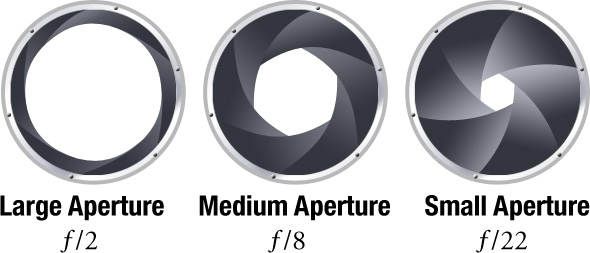
Diaphragm (aperture) is opening the camera lens where light enters. When large openings, a lot of the incoming light than the small openings. Besides being one of the ways to control incoming light, aperture is also used to control the sharp space (depth of field / DoF)
In practice, if we are in an environment that has a very bright light, then we can close the aperture so less light inside. If the dark environment, then we can open the lens aperture so that the end result to be optimal. This could be analogous to the window, the more open the more light coming in and vice versa.
In practice, if we are in an environment that has a very bright light, then we can close the aperture so less light inside. If the dark environment, then we can open the lens aperture so that the end result to be optimal. This could be analogous to the window, the more open the more light coming in and vice versa.
Aperture can also be used to control the space sharply. Large aperture makes the depth of the space is light, resulting in a blurred background. Small aperture makes a big field, resulting in all areas of the picture to be sharp or in focus space.
Aperture or opening is expressed in units of f-stop. Generally the term is called the aperture opening / aperture 5.6, the more formal language of photography can be expressed as f/5.6. As already described that the aperture is a function of how much control the sensor hole open. The smaller the f-stop number means the bigger the hole is open (and the more the volume of the incoming light) vice versa, the larger the f-stop, the smaller the hole open.
Light entering the CCD sensor is very tergan tung bukkan lens used. Aperture affects the sharp space (depth of field). The easiest way to understand the effect of the diaphragm to the sharp space is the "classic rote" below.
- Diaphragm are indicated by larger numbers (f/45, f/22, f/11)
- Indicated by the small diaphragm (f/1.4, f/2.8, f/1.4, f/1.2)
Small diaphragm produces depth of field (DOF) wide, all parts of the image appear sharper (in shop focus)
Diafrgama width produces narrow DOF, only the parts in focus are sharper, objects behind and in front of the focus will blur.
Diafrgama width produces narrow DOF, only the parts in focus are sharper, objects behind and in front of the focus will blur.
No comments :
Post a Comment